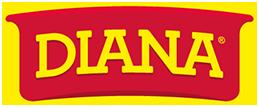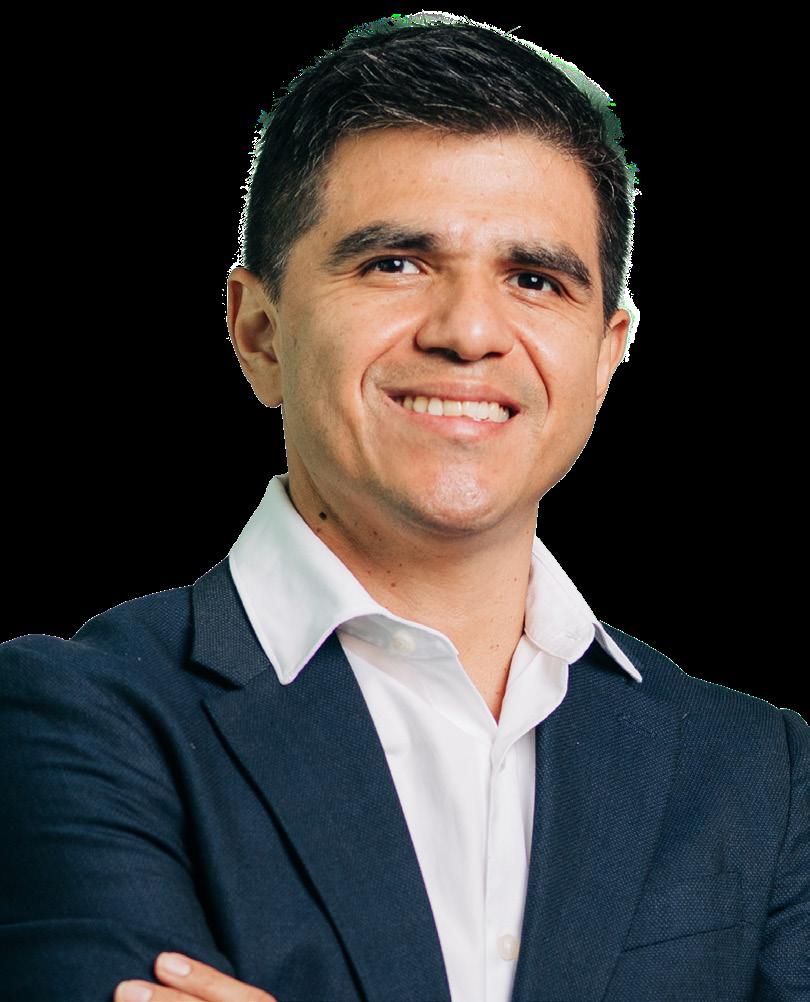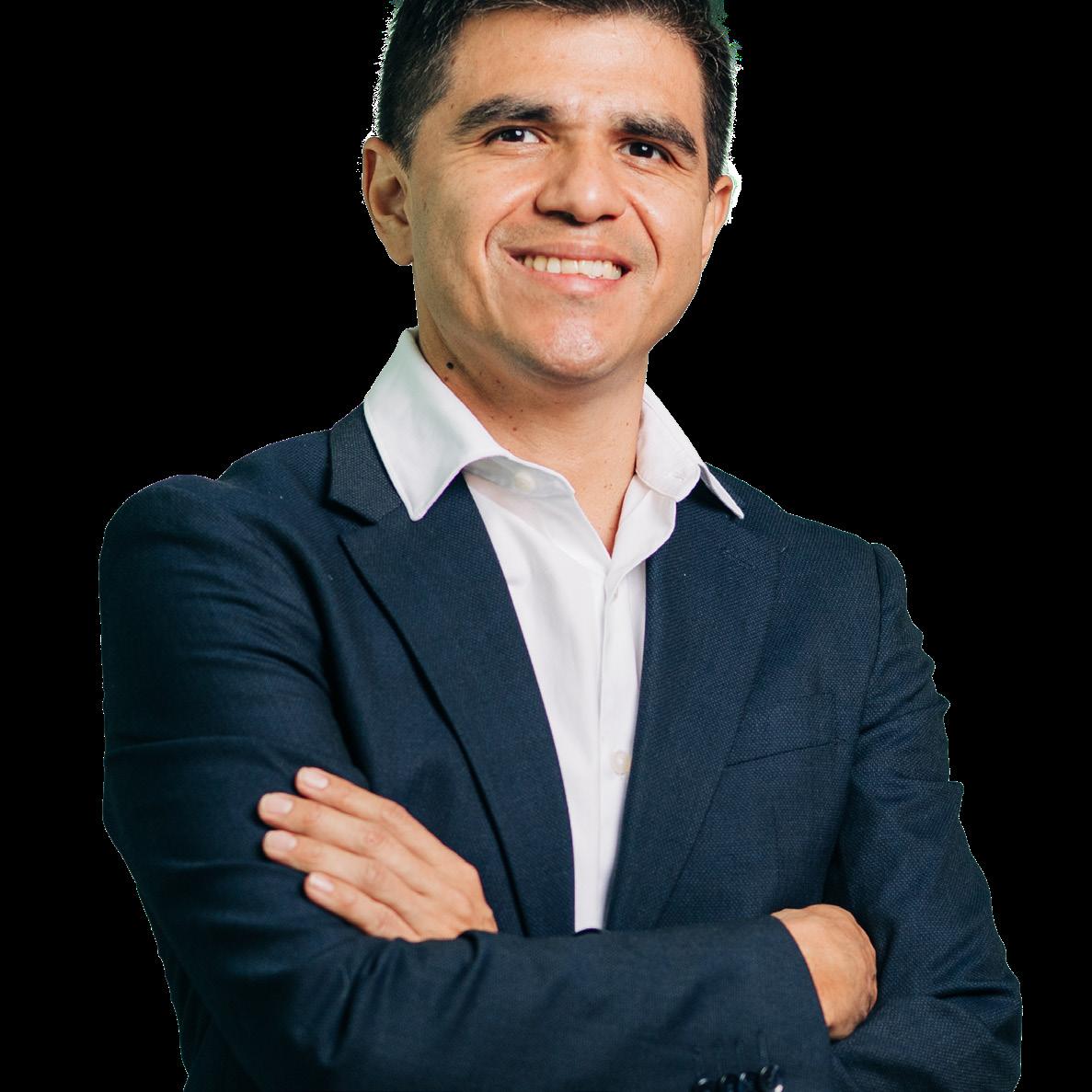
Asociados:




Asociados:



COULD YOU BRIEFLY TELL US ABOUT ALIMENTOS DIANA IN TERMS OF TRAJECTORY (HISTORY), COUNTRIES/MARKETS WHERE IT IS PRESENT, SEGMENTS/SPECIALTIES COVERED BY ITS PRODUCTS?
Diana was founded in 1951 by Max Olano and Pablo Tesak in a small garage in the Mugdan neighborhood in San Salvador, El Salvador. There, they began with the artisanal production of
snacks and confectionery. In 1952, the company produced only four products: caramel candies, salted peanuts, jellies, and cookies.
During a period of five years, DIANA experienced sales growth and it became necessary to relocate the factory to more suitable facilities, in a small warehouse in the San Esteban neighborhood of San Salvador.
Julio

At that time, DIANA distributed its products by bicycle, and it was not until 1957 that the company acquired trucks to serve more regions across the country.
Now, more than 70 years later, DIANA is the leading food export company in the region, producing 100% in El Salvador. Of the total production, approximately 70% is
exported to the five Central American countries, plus the United States. This positions the company as a leader in exports since, by 2019 alone, DIANA generated foreign exchange earnings totaling $118.8 million, and in 2024, we were awarded by the Exporters Corporation of El Salvador (COEXPORT) as the export leaders in our industry. Food & Beverage
Produced b Jassen Pintado
Interviewee:
Salazar,
Director de Tecnología de la información en Productos
Alimenticios DIANA
Creative Direction: Omar
With an operation of this magnitude, DIANA drives the development and economic activation of the country and the region, supporting not only economic growth, the generation of thousands of direct and indirect jobs, and the well-being of the communities where we operate, but also sustainable development by generating key partnerships for the care of our natural resources, promoting entrepreneurship, and fostering community development.
DIANA remains firmly committed to continuing to contribute to maintaining and generating stable and secure jobs, as well as injecting dynamism into the economy of El Salvador and the regions where we operate, particularly in the face of the impacts left by the COVID-19 pandemic and the disruption of the supply chain that affects our world globally.
IN WHAT WAY DOES ALIMENTOS DIANA RELY ON TECHNOLOGY TO OPTIMIZE ITS OPERATIONS BOTH ADMINISTRATIVELY AND MARKETWISE?
Business leaders will digitally transform their companies for the rest of their careers.
This statement reflects two fundamental realities: one is that digital is constantly changing. Over the last decade, digital has infiltrated practically every aspect of our lives, driven by the convergence of new technologies (for example, the cloud, Artificial Intelligence -AI-), new architectural paradigms (for example, microservices, APIs), and new ways of developing software (for example, agile, DevSecOps), all inherited from the tech industry. And this, considering that we have barely experienced the generative AI that involves the creation of new content and images; as well as

edge computing, quantum computing, and other cutting-edge technologies.
As technology continues to evolve, businesses must also evolve. For this reason, the word “transformation” itself is somewhat misleading because it implies a one-time program with an end. In fact, a digital transformation is a journey of continuously increasing competitiveness.
The second fundamental reality is that digital and AI
transformations are difficult.
Studies show that 89% of companies have launched some version of digital transformation, but only achieved 31% of the expected revenue increase and barely 25% of the expected total cost savings.
YESTERDAY IS NOT HOW WE DEFINE IT TODAY.
For example, in the recent past, growth was the sole goal of organizations. Today, sustainability is essential as a core element that must be, not parallel, but fully integrated into business strategies. With multiple paths (and new competitive challenges), business must evolve to survive and thrive — in essence: to be sustainable while profitable, but with a clear and defined purpose. Diana is moving forward, transforming itself through the incorporation of a digital strategy that we envision will take us into the era of ecosystems and grow profitability sustainably.
To that end, we have adopted the cloud and analytics as the foundation of our transformation. All organizations have access to artificial intelligence and modern work capabilities tailored to their needs. With the scalability of adoption speed, organizations are seeing cost reductions and more productive employees across all functions; this is called digital maturity and is basically the sum of our digital
capabilities available within the organization. Every organization in every industry needs to raise its digital maturity level to achieve success and growth. And this is precisely what we are experiencing at DIANA.
Now, digital transformation cannot simply be implemented through a system or a single technology and be done.
What we see in digital leaders is that there is no “magic case.” Instead, it’s about having hundreds of technologydriven solutions (both proprietary and commercial) working together and continuously improving to create great experiences for our collaborators, customers, and consumers, so that we can, for example, reduce unit costs and thus generate more value. Creating, managing, and evolving these solutions requires companies to fundamentally reorganize how they operate. This means getting thousands of people from different organizational units to work together, transversally
and with a different but unified vision. It means incorporating new talent and developing accelerated learning loops that leverage their skills and help them grow. As important as technology is, digital and AI transformations are also largely about developing new organizational capabilities — a key point we are developing at DIANA. No company is immune to this struggle. Even the tech companies we all know have had to invest, experiment, fail, and adapt to succeed. Take Amazon’s retail business, for example. It has automated supplier
onboarding, inventory replenishment, pricing, and order fulfillment. All of these processes were automated with proprietary solutions developed by thousands of cross-functional teams composed of business, technology, and operations experts. But it didn’t start that way; even Amazon in its early days is not the “Amazon” we know today. The company reorganized itself by investing in technologies and business capabilities, continuously improving them over time to become a digital company at its core.

It is very important to understand in this journey the alignment of value with business leaders, which is divided into six parts:
• Business and strategy lead the digital transformation map. The digital transformation map is a team sport; it is not exclusive to the technology function and that is why strategy must align value, vision, and roadmap, reimagining the business to deliver exceptional customer experiences and reduce unit costs.
• Talent. To ensure that you have the right skills and capabilities to execute and innovate.
• Operating model. It involves increasing the organization’s metabolic rate by uniting business, operations, and technology.
• Technology. To enable your organization to more easily use
technology to innovate at pace.
• Data. Continuously enriching data and making it easy to “consume” across the organization to improve customer experiences and business operations.
• Adoption and scaling. To maximize value capture by ensuring business adoption and scaling of digital solutions and rigorously managing transformation progress and risks.
HOW DO YOU SEE DIGITAL TRANSFORMATION AND ITS RELATIONSHIP TO SALES? WHAT ARE YOU AIMING FOR TODAY WITH THE GROWTH OF SO MANY TECHNOLOGIES AND ARTIFICIAL INTELLIGENCE?
Digital transformation is nothing more than preparing the company for the digital age. Today, we seek to make future sales simpler and more productive by redesigning the salesperson’s role in the age of technology.
This digital transformation aims to make an effort to meet the constantly evolving customers. Over the years, we have increased the number of salespeople, technologies, tools, and skills to make their work easier.
With the arrival of artificial intelligence, we have seen the opportunity for advanced analytics to be delegated and for technology to be treated as another member of the team. Instead of providing more technology to our talent, let’s allow technology itself to take on more responsibilities.
HOW DO YOU SEE THE EVOLUTION OF CENTRAL AMERICAN CHANNELS WITH ALL THE IMPACT OF DIGITALIZATION?
Building the Go-to-Market of the
Go-to-market models in markets like Central America have evolved in four stages in the mass consumption sector, starting from self-sales and reaching digitalization in recent years. These four stages are:
The self-sales era
The pre-sales era
The digital era
The ecosystem era
We are moving through these four eras simultaneously, depending on our clients’ needs. In the beverage, dairy, food, beer, and personal care industries, the migration from the selfsales service model to pre-sales has been completed.
In the snack industry, the migration is ongoing, with some players still in self-sales and others already completing their transition to presales; however, the entire service mosaic will depend on who has the best market information and can leverage these capabilities, allowing the addition of digital service channels powered by advanced analytics.
The analytics strategy together with artificial intelligence can make this new approach possible.



This will allow the sales force to focus on what truly matters: customer behaviors. By reducing the complexity of the sales role and suggesting actions that benefit both our customers and the company, we will be able to better address the human and emotional behaviors that drive high-quality deals.
THERE IS MUCH TALK ABOUT ANALYTICS — HOW CAN WE ADVANCE OR USE DATA FOR MASS CONSUMPTION IN THIS NEW ERA?
Data: the new ingredient in
our recipes, seasoned with analytics.
We have begun to use data to evaluate commercial effectiveness and achieve better planning. The initial focus is on Revenue Growth Management. This includes considering multiple variables such as store locations and socioeconomic factors, among others. This allows us to estimate better value for our customers, project sales during promotional periods, and ensure adequate service levels.


Transform your business with SAP Cloud ERP , connect your processes and unify your company's data to make agile and intelligent decisions . Choose the version that best suits your needs. Migrate to the cloud with SAP and prepare for the future. Proven experience to take your business to the cloud. Transform your business today. Migrate or upgrade your ERP to the Public or Private cloud Tax and regulatory compliance for CAM and CAR
+600




WHAT GOALS DOES DIANA HAVE PENDING IN THE DIGITAL AND IT ASPECT, EITHER TO BE FULFILLED DURING 2025 OR OVER LONGER TERMS?
Leveraging technology to get closer, for more and better moments.
We have always leveraged technology to connect with all stakeholders and create multiplying partnerships with companies in the mass consumption and technology industries. Today, we not only compete in mass consumption but also with technology companies.
It is said that our story is built bite by bite, occasion by occasion, and emotion by emotion. With the abundant amount of data in our arsenal and the power of AI/ML, we will also have to add byte by byte to that line.
Our commitment is to make technology fit seamlessly so that it becomes part of everyday life, and
there we will be to support them in the distributors, on the routes, and in their management forums — the information continues to enrich itself to improve decisions.
REGARDING YOUR BACKGROUND IN TERMS OF ACADEMIC PREPARATION (UNIVERSITY, POSTGRADUATE STUDIES), CAREER (EITHER AT DIANA OR OTHER COMPANIES), AND AWARDS YOU HAVE RECEIVED?
What could you share with us regarding your background in terms of academic preparation (university, postgraduate studies), career (either at Diana or other companies), and awards you have received?
My role is to generate value through technology and analytics, empowering companies to capture IT value to


- Julio Salazar, Director de Tecnología de la Información en Productos Alimenticios DIANA
achieve profit-driven business results, transform corporate relationships, leverage the right technology, and prioritize investments. This means: Revenue increase (double digits per year) with the new Point of Sale solution (Powerstreet) for Diana, creating business insights with data analytics and SAP regional rollout: integration and support for MM, FI, CO & PP for all countries in the region. Defining a strategic plan for digital transformation with a unified commerce platform (VTEX) for Siman’s e-commerce, payment gateways (CyberSource fraud management, PayPal, private and general-use credit cards), and social selling.
Implemented and supported Oracle Retail ERP, data migration,
integration, and custom add-ons as part of the retail ecosystem, helping the company have an ERP that supports multiple countries, legal entities, currencies, and process automation.
Supported the maintenance repair station (MRO) of Ramco in data migration and integration for Aveos Canada. Conducted business relationship management for the supply chain, e-commerce, and sales in partnership with IT.
I have a master’s degree in finance, PMP certification from the Project Management Institute, a bachelor’s degree in computing, e-commerce certification, and multiple certifications in the software development lifecycle.

1951 INDUSTRIA: Alimentos / Tecnología CONTACTO: www.diana.sv
